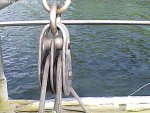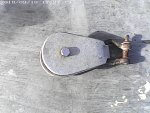Baggywrinkle
Well-Known Member
Let's assume that your steel boat is worth nothing. Depreciation will have cost you less than £1000 pa. How does that compare with the depreciation on your IP?
Depreciation and how much it matters is a simple question of the budget and thinking of the individual involved. Affordability can only be assessed on an individual level, for some, depreciation of £5K is too much ... for others, depreciation of £500K is fine. Value for money is a rational calculation but it doesn't mean anything until you are comparing two very similar offers, then it may become relevant ... depreciation of an IP against a HR for example would be a rational comparison, IP depreciation against a 5K fixer-upper is irrelevant, the prospective IP owner wouldn't even consider a 5K fixer-upper as an alternative and someone in the market for a 5K steel boat wouldn't consider an IP either.
A magazine article comparing the most expensive production boat against the cheapest might make a very interesting article, but it wouldn't really be of any practical use.




